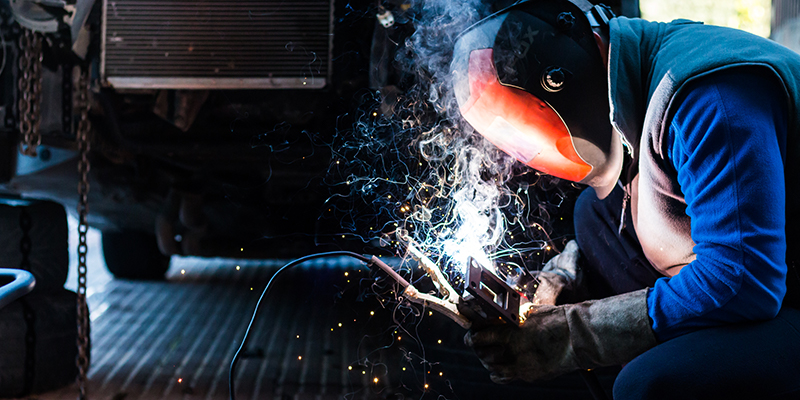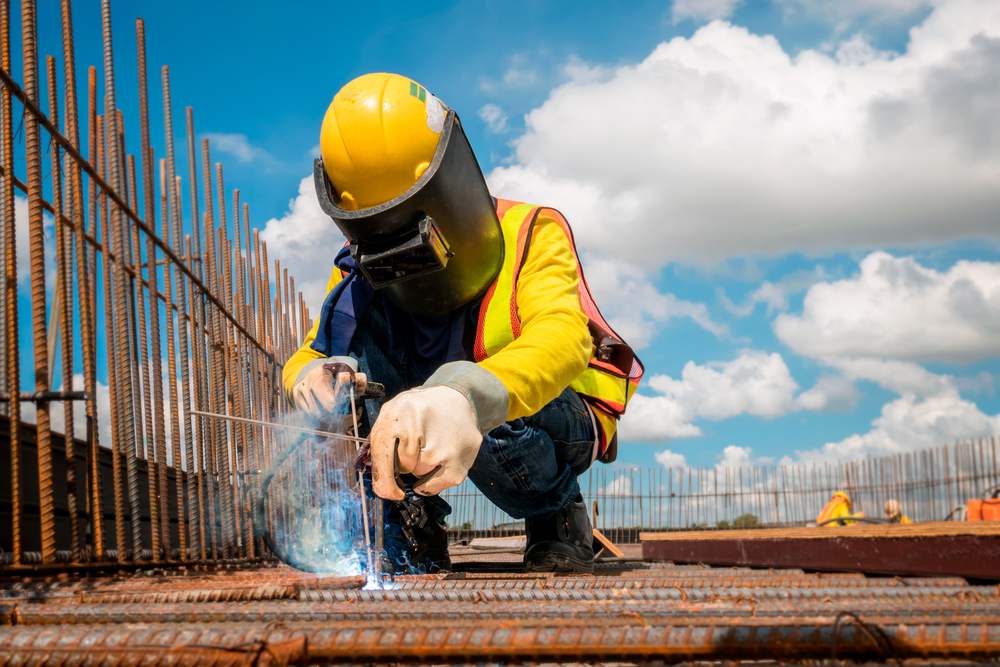Best ways to deal with warping in Montana Mobile Welding and Repair Belgrade
Everything about Welding: Secret Insights Into Techniques and Finest Practices for Success
Welding encompasses a selection of strategies, each suited for particular products and applications. Recognizing these techniques, such as GMAW, SMAW, and TIG, is crucial for achieving suitable results. The best equipment and safety and security methods can not be neglected. As prep work and repairing play essential duties in the welding process, understanding these elements can significantly boost the top quality of the last product. What are the vital variables that guarantee a successful weld?
Understanding Various Welding Strategies
Welding strategies incorporate a variety of techniques, each matched to certain applications and products. Among one of the most common techniques are Gas Steel Arc Welding (GMAW), Shielded Metal Arc Welding (SMAW), and Tungsten Inert Gas Welding (TIG) GMAW, additionally referred to as MIG welding, is prominent for its speed and adaptability, making it suitable for slim products. SMAW, or stick welding, is preferred for its simpleness and performance in outside atmospheres, particularly with thicker metals. TIG welding uses accuracy and control, making it ideal for detailed work and non-ferrous steels (Fabrication). Each strategy has its special advantages and considerations, permitting welders to select the most effective method based upon the task's demands, material type, and desired end results. Comprehending these techniques is necessary for effective welding
Essential Welding Tools and Devices
While various welding techniques require particular skills, the best devices and tools are just as essential for attaining high quality results. Important welding devices includes welding machines, which differ depending on the technique-- such as MIG, TIG, or stick welding. Safety equipment, consisting of gloves, helmets, and aprons, assurances security and convenience throughout the process. Additionally, components and clamps aid safeguard products in position, ensuring precision in welds. Consumables like welding rods, cable, and shielding gas are likewise essential components that affect the high quality of the weld. Devices such as cutters and grinders assist in surface preparation and post-weld completing, contributing to a professional outcome. Spending in premium devices eventually improves the effectiveness and performance of welding tasks.
Safety And Security Practices in Welding
Correct safety and security practices are vital in the welding industry to safeguard workers from prospective dangers. Welders should wear appropriate personal protective tools (PPE), including headgears with correct shading, handwear covers, and flame-resistant apparel. Ample ventilation is crucial to reduce direct exposure to harmful fumes and gases produced during the welding procedure. In addition, workers need to be educated in the appropriate handling of welding tools to stop crashes. Fire precaution, such as keeping flammable products far from the welding area and having fire extinguishers readily offered, are required. Normal assessments of equipment and work spaces can help determine prospective dangers before they result in accidents. By adhering to these safety practices, welders can create a much safer working environment and minimize dangers related to their trade.
Readying Materials for Welding
Preparing materials for welding is a crucial step that substantially affects the high quality and stability of the final item (Belgrade Fabrication). Appropriate preparation entails cleaning the surface areas to eliminate pollutants such as rust, dust, and oil, which can compromise the weld. Techniques such as grinding, fining sand, or utilizing solvents are generally used to attain a clean surface. Additionally, guaranteeing that the materials mesh comfortably is essential; voids can result in weak welds. It's additionally important to think about the placement and positioning of the elements, as this will affect the ease of welding and the last end result. Ultimately, choosing the ideal filler material and making sure compatibility with the base metals is important for accomplishing solid, long lasting welds
Tips for Achieving High-Quality Welds
Attaining top quality welds needs interest to information and adherence to best methods throughout the welding procedure. Appropriate joint prep work is vital, ensuring surface areas are complimentary and clean from impurities. Picking the suitable filler product and welding method based on the base steels is important for ideal bonding. Preserving consistent travel speed and angle while welding can advertise and stop defects uniformity. In addition, managing heat input is necessary; extreme heat can lead to warping and compromised joints. If essential, on a regular basis inspecting the welds throughout the process allows for prompt changes. Ultimately, using proper post-weld treatments, such as cleansing and stress and anxiety alleviation, can enhance the sturdiness and stability of the weld, ultimately guaranteeing a successful end result.
Repairing Usual Welding Issues
Welding usually offers obstacles that can affect the top quality and stability of the final item. Typical issues such as porosity, inconsistent weld grains, and overheating can develop, each requiring details fixing techniques. Understanding these problems is essential for welders to improve their skills and accomplish excellent results.
Porosity Troubles Described
Although porosity can often be forgotten, it remains an essential concern in welding that can jeopardize the honesty of a finished item. Porosity describes the existence of little gas pockets within the weld grain, which can weaken the joint and lead to premature failing. This trouble normally arises from pollutants, dampness, or improper shielding gas insurance coverage during the welding procedure. To mitigate porosity, welders ought to verify that the base products are dry and clean, use ideal protecting gases, and preserve consistent welding parameters. Routinely examining the tools and environment can additionally aid determine possible concerns before they materialize in the weld. Dealing with porosity successfully is essential for achieving strong, long lasting welds that fulfill high quality standards.

Inconsistent Weld Beans
Irregular weld grains can considerably affect the quality and toughness pop over here of a completed product. Different elements add to this issue, consisting of inappropriate traveling speed, wrong amperage settings, and irregular electrode angles. When the welder moves also rapidly, a grain may show up narrow and lack penetration, while relocating too gradually can trigger excessive build-up. Additionally, making use of the incorrect amperage can lead to either undercutting or extreme spatter, both of which compromise weld integrity. The welder's technique, such as inconsistent torch motion, can likewise lead to uneven bead look. To reduce these problems, welders should concentrate on keeping consistent, regulated movements and making sure correct tools settings to achieve harmony in their welds. Consistency is essential to accomplishing trusted and strong welds.
Overheating and Bending Issues
Excessive warm throughout the welding process can lead to substantial getting too hot and warping problems, affecting the architectural honesty of the workpiece. These problems commonly materialize as distortion, which can jeopardize placement and fit-up, making more assembly testing. Variables adding to overheating consist of the option of welding criteria, such as voltage and take a trip speed, along with the kind of product being welded. To alleviate these concerns, welders ought to preserve regular traveling speed and suitable heat input while monitoring the workpiece temperature level. Furthermore, pre-heating or post-weld warmth treatment can aid relieve anxieties caused by fast air conditioning - Welding. Regular examination and adherence to ideal techniques are crucial in protecting against getting too hot and guaranteeing the durability and integrity of welded structures
Often Asked Inquiries
What Are the Occupation Opportunities in the Welding Market?
The welding industry offers diverse profession possibilities, including placements as welders, instructors, designers, and assessors. Experts can work in production, building and construction, aerospace, and auto markets, benefiting from solid demand and affordable salaries in numerous functions.
Exactly How Can I Improve My Welding Speed Without Compromising Quality?
To boost welding rate without giving up top quality, one ought to practice effective strategies, keep tools, maximize settings, and enhance hand-eye coordination. Regular training and seeking responses can additionally considerably add to accomplishing quicker, high-grade welds.
What Accreditations Are Readily Available for Welders?
Numerous qualifications exist for welders, consisting of those from the American Welding Society (AWS), the National Center for Construction Education and Study (NCCER), and different industry-specific companies. These qualifications improve employability and show skill efficiency.
Exactly How Does Welding Affect the Features of Metals?
Welding influences the residential properties of steels by altering their microstructure, which can lead to changes in stamina, firmness, and ductility. Heat input and cooling rates during the process greatly affect these product attributes.
Can I Weld Dissimilar Metals With Each Other?
